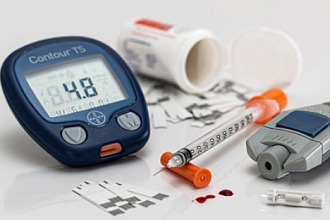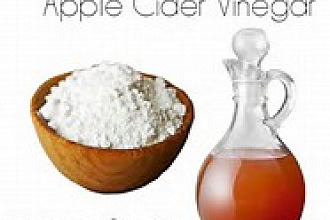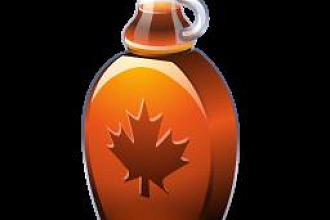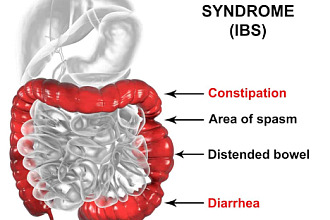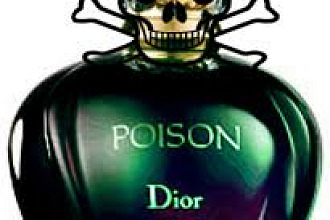Until recently, most of us thought that our personal care product are safe to use because everything was regulated by the Food and Drug Administration.
But did you know that the United States hasn’t passed a law regulating cosmetics since 1938? Keep in mind that only a handful of brands that existed back then are still being used today. Manufactures are using toxic chemicals in nearly everything that we use, and they have little to no restrictions or limitations. We have to think about how these chemicals affect our health, our families, and the environment. Although we may think that our favorite shampoo can’t do any damage, the remains of the product can end up in the water and soil affecting plant and animal life. And while there are dozens of chemicals that need to be eliminated from our shelves, these are the 10 worst offenders. If you haven’t cleansed your home, makeup bag, or medicine cabinet of these chemicals, it may be time for a detox.
1,4-Dioxane: is a synthetic, flammable, industrial chemical that is potentially explosive when exposed to light or air. It is used to help dissolve, wet, and stabilize other substances. Short-term exposure has been known to cause irritation to the skin; long-term exposure can put you at risk for kidney and liver damage. 1,4-Dioxane is also resistant to biodegradation in water and soil and does not bioconcentrate in the food chain. Synonyms include dioxane, diethylene dioxide, diethylene ether, glycol ethylene ether, p-dioxane, and diethylene oxide. Despite all of these rather disturbing traits, you can find it in deodorant, shampoo, cosmetics, and antifreeze.
Parabens: are the first chemicals we generally learn about when looking to go non-toxic and eco-friendly in our household. They are found in 75-95 percent of cosmetics and are commonly used as an unmarked ingredient in fragrances or perfumes. (Fragrances do not have to be disclosed to the public as they are considered a trade secret.) Parabens can easily penetrate skin, bypass the metabolic process, and enter the bloodstream and organs without being broken down. They can mimic estrogen which interferes with hormone function in both men and women. Parabens have also been detected in the breast tissue of many breast cancer patients. They are also resistant to biodegradation in water and soil and do not bioconcentrate in the food chain. Synonyms include methylparaben, butylparaben, ethylparaben, isobutylparaben, etc. You can find parabens in thousands of cosmetics and pharmaceutical products.
DEA (Diethanolamine): DEA compounds are used to make products creamy and sudsy. These compounds counteract the acidity of other ingredients to act as aph adjuster. DEA compounds could irritate the nose and throat. Studies have also shown it to have effects on the liver, kidney, blood, and central nervous system with chronic exposure. DEA compounds are also toxic to aquatic animals and can contaminate the water. Synonyms include cocomide DEA, lauramide DEA, and (related chemicals) MEA and TEA. You can find these compounds in soaps, shampoos, cleansers, scrubs, and more.
Triclosan: is a synthetic antibacterial that functions as a pesticide. Triclosan can easily irritate the skin and eyes. It is also a suspected carcinogen and hormone disrupter as it may produce dioxin (see first chemical mentioned). More specifically, it can decrease fertility, produce birth defects, and can alter DNA. It is very toxic to aquatic organisms and is bioaccumulative. It can cause both short-term and long-term effects to aquatic organisms and their environment. You can find it in antibacterial cleaners, toothpastes, and household products.
Phthalates: are a group of chemicals that make plastic more flexible and dissolve other materials. Phthalates are endocrine disrupters which can cause birth defects, tumors, and a reduced sperm count in males. As they are also used as fragrances, they are known asthma triggers. Phthalates are bioaccumulative are toxic to aquatic organisms. They can even function as endocrine disrupters in fish, which also affects birds. You can find them in fragranced household items such as dish soap, toilet paper, air fresheners, anything with a “fragrance” or “parfum,” children’s toys, and medical equipment.
Sulfates: are synthetic ingredients generally derived from petroleum, another toxic ingredient (see below) that is a non-renewable source. Sulfates act as foaming agents. They cause potential eye damage, severe skin irritation, depression, labored breathing, and more. Sodium Lauryl Sulfate (SLS) can remain in the body for up to five days, staying behind in the heart, lungs, liver, and brain. SLS can also damage the immune system and mutate into nitrosamines, a known class of carcinogens. Sulfates promote methylation of mercury to its most toxic form, leading to a higher concentration of heavy metals in water and plant life. Synonyms include Sodium Lauryl Sulfate (SLS) and Sodium Laureth Sulfate (SLES). You can find sulfates in detergents, floor cleaners, engine degreasers, hair care, toothpaste, and more.
Chemicals That Release Formaldehyde: Brands won’t go as far as to mention that formaldehyde is actually in the products, but will go as far as including chemicals that release formaldehyde and act as a preservative and antimicrobial. These chemicals can irritate the skin, eyes, and lungs. Formaldehyde is widely known to cause cancer and kills bacteria and other microorganisms. Synonyms include DMDM hydantoin, diazolidinyl urea, imidazolidinyl urea, Methenamine, and more. You can find these chemicals in hair products, moisturizers, and other personal care products.
Mineral Oils and Petroleum: Mineral oils are a mix of hydrocarbons obtained from petroleum. It is used as a skin and hair conditioning agent, UV absorber, a barrier to lock in moisture and to add shine to your skin and hair. Petroleum easily clogs the pores and prevents skin from breathing. Used regularly, it can cause skin to age prematurely. It’s also a known carcinogen, especially as a cause for breast cancer and skin cancer. These chemicals are endocrine disrupters for all animals and can cause them breathing problems. You can find mineral oils and petroleum in engine oils, pesticides, moisturizers, lotions, bath oils, baby products, and other personal care products.
BHA and BHT: BHA (butylated hydroxyanisole) and BHT (butylated hydroxytoluene) are used as preservatives, stabilizers, masking agents, and antioxidants. These chemicals are suspected endocrine disrupters as well as suspected carcinogens. BHA and BHT are low-level carcinogens for fish and other wildlife. It has the potential to bioaccumulate and is most dangerous to aquatic species. You can find them in moisturizers, cosmetics, processed food, dog food, and toys.
Oxybenzone: is a chemical additive to sunscreen which is a UV light absorber and UV filter. Oxybenzone (and other chemical sunscreens, retinyl palmitate and octyl methoxycinnamate) does not allow for vitamin D to absorb into the skin. It’s also a possible immune system disrupter and endocrine disrupter. Most importantly, as a photocarcinogen, it leads to the increase of free radicals which is believed to have been a contributing factor to the rise of melanoma cases. It is harmful towards animals and plant life by encouraging cellular degradation. It’s also well-known for increasing acidity in ocean water, causing coral bleaching.
Time to Start Detoxing: If you have yet to purge your home of any of these chemicals, it can definitely seem like an overwhelming process to let go of your favorite brands and products. But it's good to know that you, your family and the environment will be safer, and healthier, and you won’t miss these chemicals one bit.


















